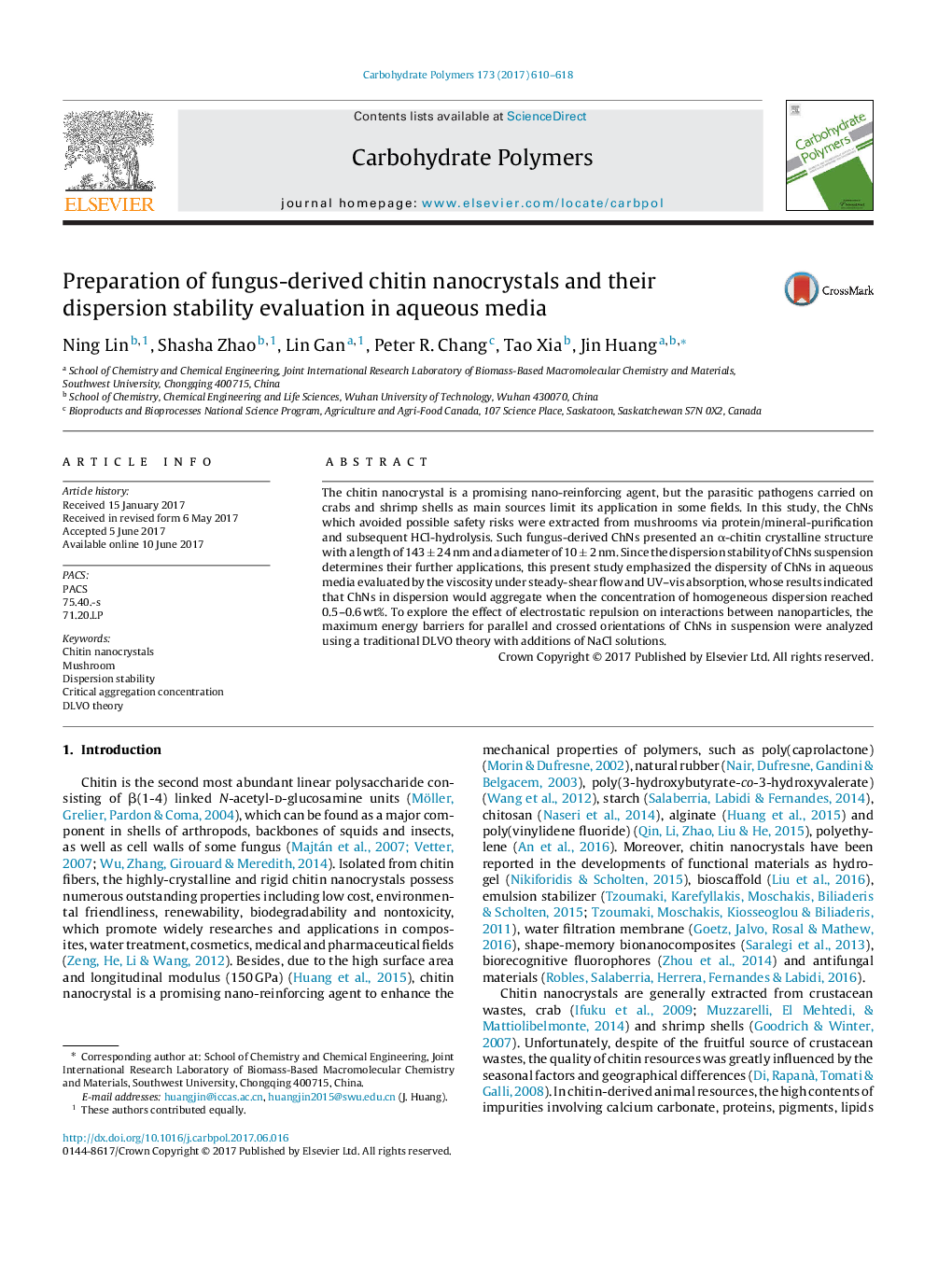| Article ID | Journal | Published Year | Pages | File Type |
|---|---|---|---|---|
| 5157438 | Carbohydrate Polymers | 2017 | 9 Pages |
Abstract
The chitin nanocrystal is a promising nano-reinforcing agent, but the parasitic pathogens carried on crabs and shrimp shells as main sources limit its application in some fields. In this study, the ChNs which avoided possible safety risks were extracted from mushrooms via protein/mineral-purification and subsequent HCl-hydrolysis. Such fungus-derived ChNs presented an α-chitin crystalline structure with a length of 143 ± 24 nm and a diameter of 10 ± 2 nm. Since the dispersion stability of ChNs suspension determines their further applications, this present study emphasized the dispersity of ChNs in aqueous media evaluated by the viscosity under steady-shear flow and UV-vis absorption, whose results indicated that ChNs in dispersion would aggregate when the concentration of homogeneous dispersion reached 0.5-0.6 wt%. To explore the effect of electrostatic repulsion on interactions between nanoparticles, the maximum energy barriers for parallel and crossed orientations of ChNs in suspension were analyzed using a traditional DLVO theory with additions of NaCl solutions.
Keywords
Related Topics
Physical Sciences and Engineering
Chemistry
Organic Chemistry
Authors
Ning Lin, Shasha Zhao, Lin Gan, Peter R. Chang, Tao Xia, Jin Huang,
